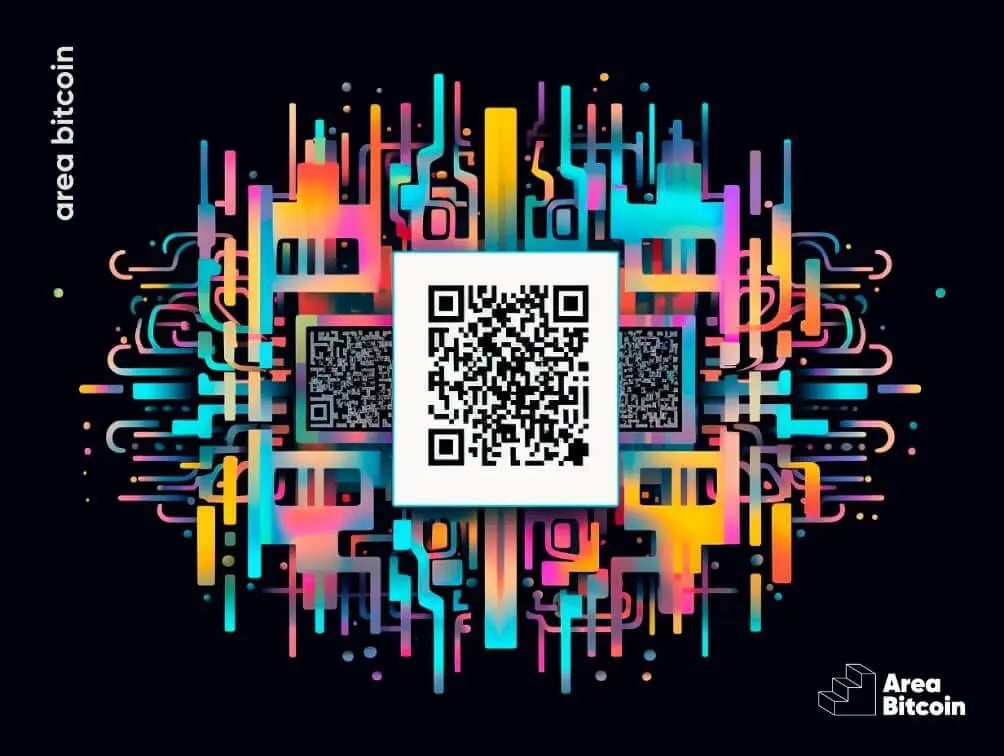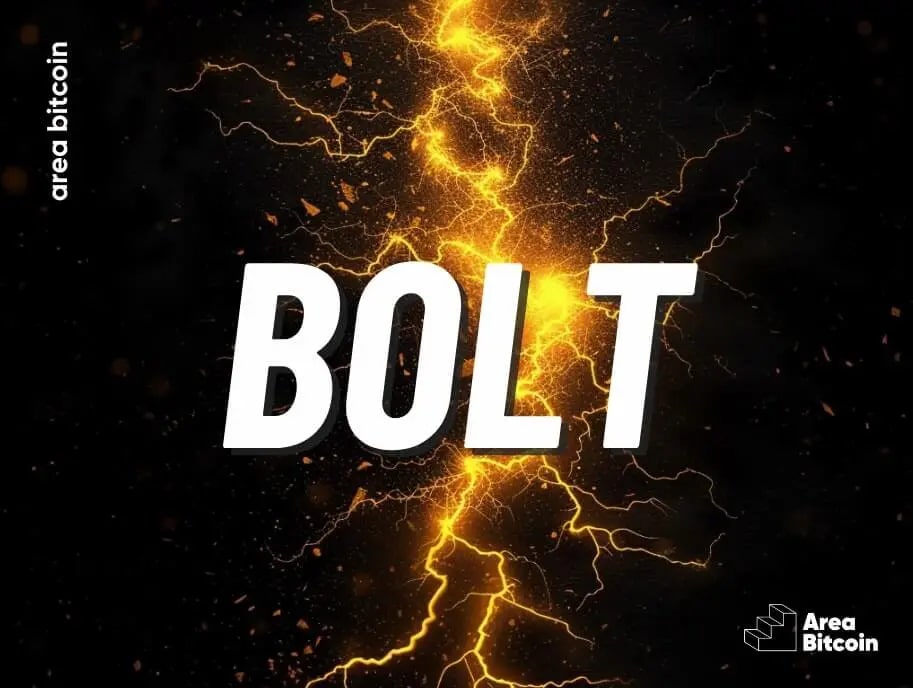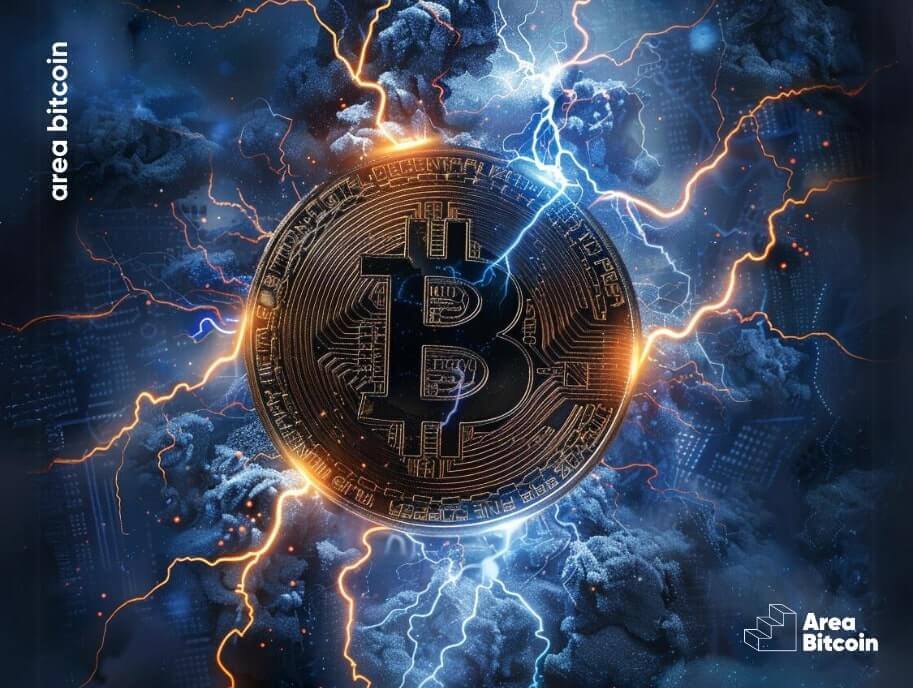The Lightning Network represents more than just the future of Bitcoin; it embodies the future of the internet and revolutionizes how we exchange information and value in the digital realm.
However, amidst its immense potential, there are individuals who engage in nitpicking and spreading baseless criticisms.
At Area Bitcoin, our mission is to dispel fear, uncertainty, and doubt (FUD) while providing clarity. Therefore, we have undertaken the task of addressing the five most prevalent falsehoods surrounding the Lightning Network, debunking each one of them in this article.
1. Is the Lightning Network centralized?
What is the Lightning Network? The Lightning Network is more than just a second layer of programming codes that connects to the blockchain; it brings speed and lower costs to operations on the Bitcoin network.
In fact, the Lightning Network relies precisely on the rules, security, and decentralization of the main layer. Each of the 45,000 nodes on the Bitcoin network, distributed around the world, can also run a Lightning node. Therefore, if the Bitcoin network is decentralized, relying on it with a peer-to-peer (P2P) structure is the most obvious way to maintain decentralization. This is precisely what the Lightning Network accomplishes through its network of over 76,000 active channels and over 5,000 Bitcoins providing liquidity for these channels.

Currently, there are over 14,000 Lightning nodes in operation. However, it is important to note that this number is an estimate as it only considers public channels. Numerous nodes utilize anonymous networks, making them undetectable and thus not accounted for in this estimation.

Hence, it is highly likely that the actual number of Lightning nodes surpasses the reported count of 14,000, similar to how the number of Bitcoin nodes exceeds the 16,000 nodes listed on search platforms such as Bitnodes.
It is estimated that there are now over 45,000 Bitcoin nodes actively decentralizing the network, encompassing both detectable and undetectable nodes.

P2P Networks
P2P networks like Bitcoin and Lightning rely on the fact that anyone can have a node, verify the blockchain themselves, and check if the network consensus is being followed. The Bitcoin blockchain is lightweight; any simple computer can run it. This is significantly different from other protocols where downloading the entire blockchain is extremely resource-intensive, resulting in a reliance on centralized servers and data centers, such as Amazon, Microsoft, or Google.
Then, someone might argue that the majority of Lightning nodes and channels are located in data centers, suggesting that the Lightning Network is centralized. They may also claim that Lightning hubs, which possess more capital, are centralizing the system.
That’s also not true!
If a significant portion of nodes utilize Tor, it raises the question of how we can accurately determine the prevalence of Lightning nodes in data centers.
The statistics we commonly refer to only account for detectable nodes, excluding those operating through TOR. Given that it is likely that a majority of personal nodes employ Tor for enhanced privacy and security, these statistics do not provide a comprehensive representation of the network.
Those who claim that the more liquid channel hubs centralize the network usually draw this mistaken conclusion from images like this:

The image illustrates that 33% of nodes, represented by the gray portion, are not located in data centers. These nodes belong to ordinary individuals.
However, it is important to note that when considering the entire proportion of nodes in data centers (the colored portion), it surpasses the number of personal nodes. These data center nodes tend to possess a larger volume of liquidity, making them the wealthier nodes with more Bitcoin allocated in their channels.
This observation highlights that certain channel hubs with substantial liquidity heavily rely on data centers.
It supports a common criticism directed towards the Lightning Network, suggesting that it may become centralized around a few prominent nodes, ultimately leading to the formation of monopolistic payment hubs.
This concern becomes particularly relevant when considering the integration of exchanges and payment companies into the Lightning Network, as they could accumulate significant liquidity and consolidate payment routes around their services.
Delving Deeper: Reflecting on the Implications
Yes, this possibility exists, but it would not lead to the centralization of the network.
The Lightning Network is intrinsically tied to Bitcoin, and no matter how much capital-rich entities participate, they cannot centralize the decision-making power. The entrance of exchanges and centralizing forces has always been expected. What truly matters is the network’s ability to resist total centralization.
To comprehend this, it is crucial to recall the concept of decentralization and the risks associated with centralization. The primary concern with centralization is the monopolization of decision-making power. When this occurs, changes in rules disproportionately favor those who control the infrastructure, potentially leading to censorship, the creation of barriers to entry, and restrictions on protocol usage. Fortunately, neither Bitcoin nor the Lightning Network allow for such outcomes.
Even if entities start censoring transactions, smaller nodes will still continue routing transactions normally. They won’t be affected because they are independent because the fundamental rules of Bitcoin don’t change.
If centralized entities start infiltrating the network and censoring transactions, there will always be ordinary people running nodes with VPN and TOR who won’t censor. This is a result of the ease of running a full node.
So there is no single point of failure. It’s pure game theory.
Independent nodes will receive satoshis for routing these operations, and financial incentives will keep the network running normally. This means that even if participants try to monopolize the network, they can’t prevent people from choosing to follow other payment routes.
It is difficult for me to ascertain the motivations behind those who claim that the Lightning Network is centralized.
It seems likely that either they have not thoroughly studied the dynamic incentives of Bitcoin and Lightning, or they are attempting to promote an alternative protocol as superior to Bitcoin for payment purposes.
It is worth noting that those who propagate these assertions often tend to be proponents of fiat currency and centralization or enthusiastic supporters of “shitcoins.”
2. Are non-custodial Lightning Network wallets not good?
Bitcoin and Lightning still have plenty of room for improvement in terms of user experience and interface, but this is entirely normal.
Even the Internet was challenging to navigate in its early days.
Can you recall those dial-up connections and the exorbitant costs incurred on your landline phone bill for browsing? It was an expensive affair.
New technologies typically entail a learning curve that cannot be overcome overnight. However, they gradually evolve and improve over time.
Check out the Best Bitcoin Hot Wallets
That being said, if you are seeking a non-custodial Lightning wallet, you can already utilize options like Blixt or Bitkit or connect Blue Wallet to your own node and channels.
Numerous other emerging choices are available. Hence, stating that “there are no good non-custodial wallets” goes beyond spreading fear, uncertainty, and doubt (FUD). It reflects a lack of willingness to conduct research and test the existing solutions that are already in place.
Learn more about Bitcoin Wallets!
3. Do I need to open a channel with everyone I’m going to trade with?
Channels are an essential component of the Lightning network’s operation, but it would be entirely impractical if we had to open a channel with every individual we wished to send Bitcoin to.
Fortunately, that is not how the system functions.
Let’s consider a scenario where I need to pay Pedro 100 satoshis, but I do not have a direct channel with him. However, I do have an open channel with Carol, and Carol, in turn, has an open channel with Pedro.
In this case, I can request Carol to act as a bridge and facilitate the payment to Pedro on my behalf. As compensation for providing this service, I offer Carol a few satoshis.

This is how transaction routing functions in Lightning. It is not imperative for me to have a direct channel open with the ultimate recipient; rather, I need to establish connections with other channels that possess those connections.
Now, if we substitute Carol, Kaká, and Pedro with all the individuals and businesses interested in utilizing Lightning, we can envision a network map resembling the one depicted here.
Numerous channels become accessible, enabling us to send Bitcoin to anyone globally without the necessity of opening a dedicated channel with each individual recipient.

4. Does Lightning Undermine Bitcoin’s Security with Fee Reduction?
This myth is rooted in a factual observation: as the number of Lightning transactions increases, on-chain transactions are likely to become cheaper due to reduced network congestion.
However, it is important to note that lower fees could potentially diminish incentives for miners, resulting in reduced Bitcoin rewards.
Nevertheless, the situation is not as straightforward as it may seem.
If the usage of the Lightning network expands, it implies that more Lightning channels will be opened, which in turn necessitates processing on the blockchain layer to establish these channels.
The growth of Lightning does not diminish the demand for Bitcoin; rather, it intelligently accommodates and utilizes the existing computational power of the network to facilitate transactions more efficiently.
Learn here: What is Taproot?
Blockchain Trilemma
Lightning resolves the blockchain trilemma, a situation where achieving security, scalability, and decentralization simultaneously was not feasible within a single protocol. It accomplishes this by shifting scalability to layer 2 and reducing the number of less significant transactions at layer one.
Consequently, the blockchain layer becomes dedicated to the ultimate settlement of operations, enabling it to encompass an entire economic system.
In layer 2, a channel can facilitate millions of transactions, while in layer 1, only the opening and closing of the channel are recorded. As a result, despite exerting the same computational effort to include transactions in a block, the network can achieve significantly more throughput and efficiency.
With the creation of additional applications in Lightning and other layers, the demand for these lightweight solutions grows.
These solutions offer the advantage of bypassing the blockchain layer while retaining its underlying guarantees of security and decentralization. As a result, miners can operate more efficiently and earn higher fees, all while expending the same amount of energy to mine a block.
This dispels the myth that miners will abandon the network once the last Satoshi is mined.
The reduction of Bitcoin network fees does not present a problem nor pose any security risks. As the network expands and more channels are opened, miners will continue to receive increased fees.
Therefore, the growth of the network ensures a sustainable incentive structure for miners, debunking concerns regarding their long-term participation.
5. Do you need to be always online to use the Lightning network?
This is no longer true, thanks to the introduction of a new implementation of Lightning called LNURL, which is already in operation.
Prior to this protocol, having a static QR Code for Lightning payments was not feasible. Each time a QR Code or address was used, it became unusable, necessitating the recipient to be consistently online to generate new QR Codes.
This practice is impractical for merchants since having to generate a new QR Code for each payment received can be detrimental to their business.
However, LNURL has revolutionized the usability of the Lightning network by enabling the use of a single QR Code that remains valid indefinitely, even when offline.
The architecture of the Bitcoin network is inherently decentralized, and the Lightning network serves as an additional layer within this global, digital, and distributed web that encompasses Bitcoin. While there is ample room for improvement and further development, this presents an exciting opportunity for early adopters—the ones who seize the advantage of being at the forefront of this technology.
That’s why it’s important to start today!
Share on your social networks:

One of the leading Bitcoin educators in Brazil and the founder of Area Bitcoin, one of the largest Bitcoin schools in the world. She has participated in Bitcoin and Lightning developer seminars by Chaincode (NY) and is a regular speaker at Bitcoin conferences around the world, including Adopting Bitcoin, Satsconf, Bitcoin Atlantis, Surfin Bitcoin, and more.
Did you like this article? Consider buying us a cup of coffee so that we can keep writing new content! ☕







